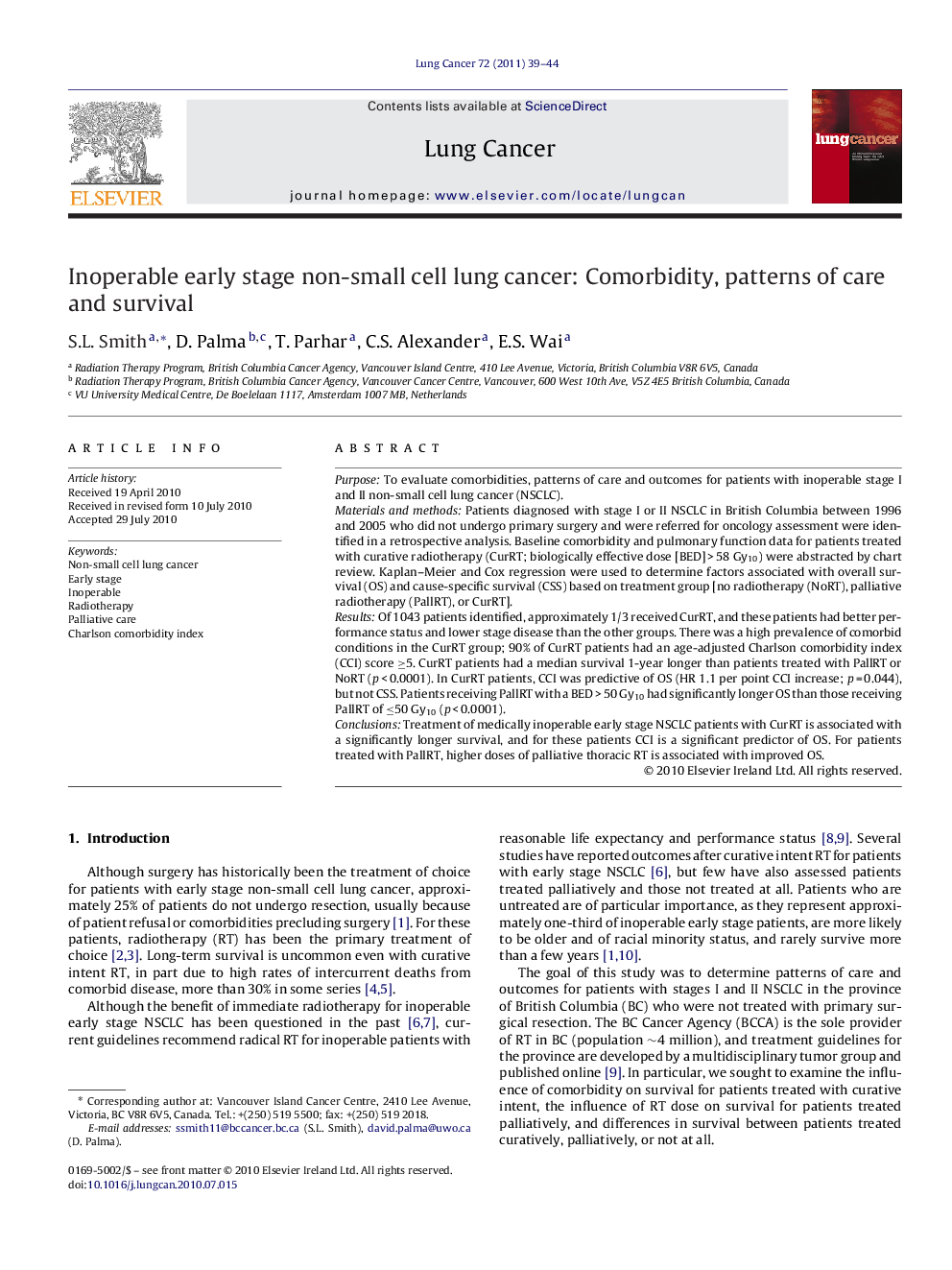| Article ID | Journal | Published Year | Pages | File Type |
|---|---|---|---|---|
| 2141491 | Lung Cancer | 2011 | 6 Pages |
PurposeTo evaluate comorbidities, patterns of care and outcomes for patients with inoperable stage I and II non-small cell lung cancer (NSCLC).Materials and methodsPatients diagnosed with stage I or II NSCLC in British Columbia between 1996 and 2005 who did not undergo primary surgery and were referred for oncology assessment were identified in a retrospective analysis. Baseline comorbidity and pulmonary function data for patients treated with curative radiotherapy (CurRT; biologically effective dose [BED] > 58 Gy10) were abstracted by chart review. Kaplan–Meier and Cox regression were used to determine factors associated with overall survival (OS) and cause-specific survival (CSS) based on treatment group [no radiotherapy (NoRT), palliative radiotherapy (PallRT), or CurRT].ResultsOf 1043 patients identified, approximately 1/3 received CurRT, and these patients had better performance status and lower stage disease than the other groups. There was a high prevalence of comorbid conditions in the CurRT group; 90% of CurRT patients had an age-adjusted Charlson comorbidity index (CCI) score ≥5. CurRT patients had a median survival 1-year longer than patients treated with PallRT or NoRT (p < 0.0001). In CurRT patients, CCI was predictive of OS (HR 1.1 per point CCI increase; p = 0.044), but not CSS. Patients receiving PallRT with a BED > 50 Gy10 had significantly longer OS than those receiving PallRT of ≤50 Gy10 (p < 0.0001).ConclusionsTreatment of medically inoperable early stage NSCLC patients with CurRT is associated with a significantly longer survival, and for these patients CCI is a significant predictor of OS. For patients treated with PallRT, higher doses of palliative thoracic RT is associated with improved OS.
